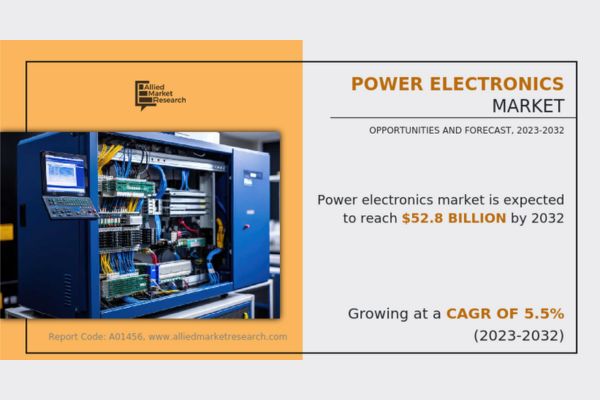Technological advances continue to drive innovation in power electronics, enabling the development of more efficient, compact, and reliable power conversion systems for diverse applications. In the meantime, Toshiba Electronics Europe launched a new 150V N-channel power MOSFET based upon their latest generation U-MOS X-H Trench process. Similarly, Infineon Technologies AG has launched its latest generation of power MOSFETs for automotive applications, the OptiMOS 740 V MOSFET family.
Power electronics is a branch of electrical engineering that deals with the conversion, control, and management of electrical power. It involves the design and implementation of circuits and systems that manipulate electric power to meet specific requirements. Power electronic devices, such as diodes, transistors, and thyristors, play a crucial role in efficiently converting and controlling electrical energy in various applications, including renewable energy systems, electric vehicles, industrial automation, and consumer electronics. Key concepts in power electronics include power conversion techniques, switching topologies, modulation strategies, and control methods aimed at improving efficiency, reliability, and performance of power systems.
According to a report published by Allied Market Research, the global power electronics market size is registered to reach $52.8 billion with a considerable CAGR from 2023 to 2032. North America is currently dominating the market with the largest market share. The LAMEA region, at the same time, is anticipated to manifest the fastest growth rate during the forecasted period.
An array of technological advancements is driving the growth of the market. Here are some key advancements in detail –
Wide bandgap semiconductor – materials like silicon carbide (SiC) and gallium nitride (GaN) offer superior electrical properties compared to traditional silicon-based semiconductors. They can operate at higher temperatures, voltages, and frequencies, leading to reduced losses and increased power density in power electronic devices.
High frequency switching – switching frequencies in power converters have been steadily increasing, leading to smaller passive components (inductors and capacitors) and reduced size and weight of power electronic systems. High frequency operation also enables higher efficiency and faster transient response.
Digital control and signal processing – advances in digital signal processors (DSPs) and microcontrollers have enabled sophisticated control algorithms and modulation techniques in power converters. Digital control offers flexibility, precision, and adaptive capabilities, allowing for optimal performance under varying operating conditions.
Multilevel converter topologies – multilevel converter topologies, such as the netral point clamped (NPC) and cascaded H-Bridge (CHB) configurations, offer advantages like reduced harmonic distortion, lower switching losses, and improved voltage waveform quality. These topologies are increasingly used in medium and high-power applications, including renewable energy systems and electric traction.
Advanced cooling techniques – thermal management is critical in power electronics to maintain device reliability and performance. Advances in cooling technologies, such as liquid cooling, phase change materials, and advanced heat sinks, help dissipate heat more efficiently, enabling higher power densities and extended device lifetimes.
Integration and packaging – integration of power electronic components, such as power switches, gate drivers, and sensing circuits, into single packages or modules, enhances reliability, reduces parasitic effects, and simplifies system design and assembly. Advanced packaging techniques, like power module embedding and direct liquid cooling, further improve thermal performance and system integration.
Grid integration and smart grids – power electronic systems play a crucial role in integrating renewable energy sources, energy storage systems, and electric vehicles into the electrical grid. Advanced grid-tied inverters and converters enable bidirectional power flow, grid stabilization, voltage regulation, and power quality improvement, supporting the transition towards smart grids and sustainable energy systems.
These technological advances continue to drive innovation in power electronics, enabling the development of more efficient, compact, and reliable power conversion systems for diverse applications.
With this drift on board, frontrunners are taking initiatives in launching new products. For instance, Toshiba Electronics Europe launched a new 150V N-channel power MOSFET based upon their latest generation U-MOS X-H Trench process. Similarly, Infineon Technologies AG has launched its latest generation of power MOSFETs for automotive applications, the OptiMOS 740 V MOSFET family. Here, it is worth saying that the global power electronics market has a huge scope to gather growth in the near future.















